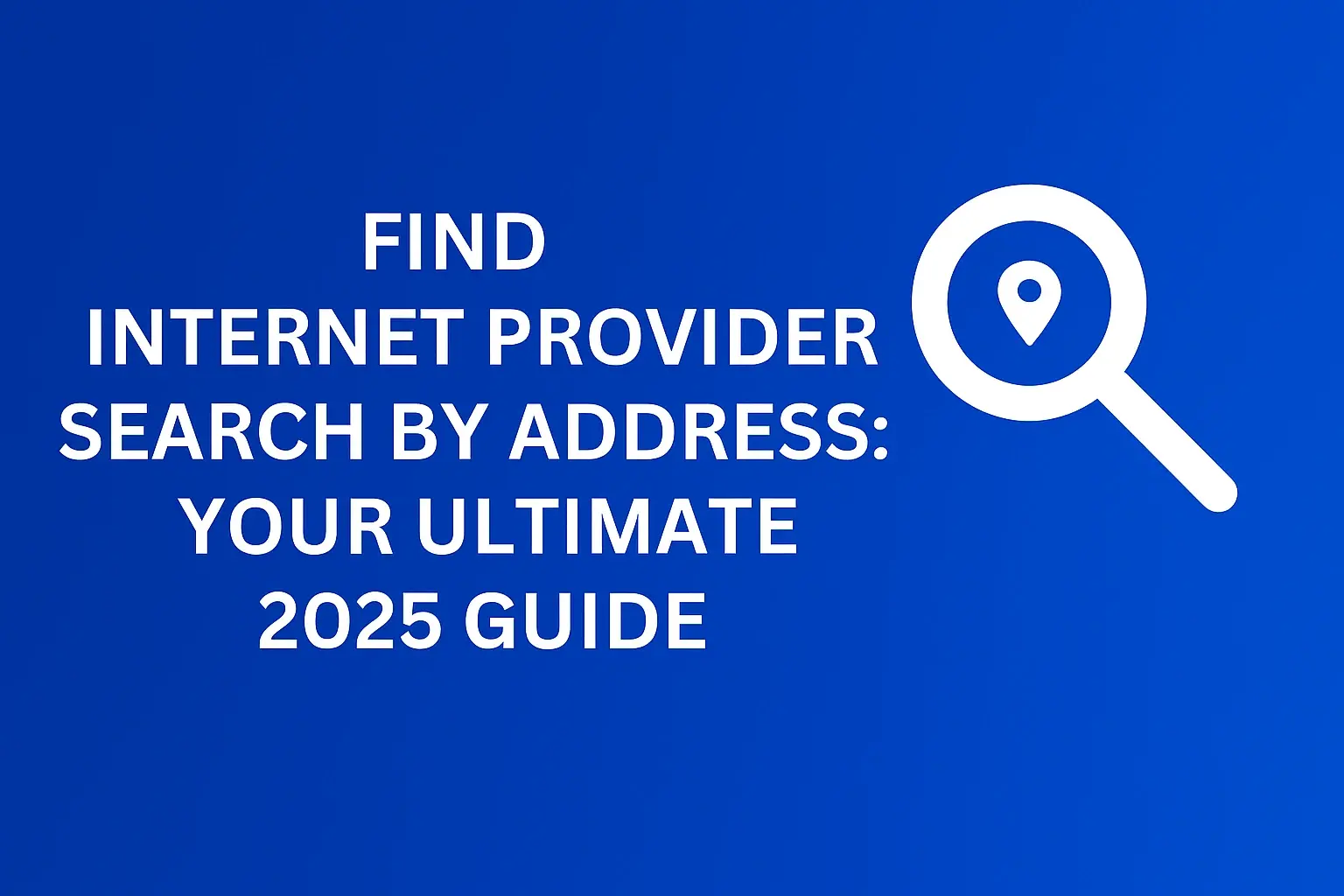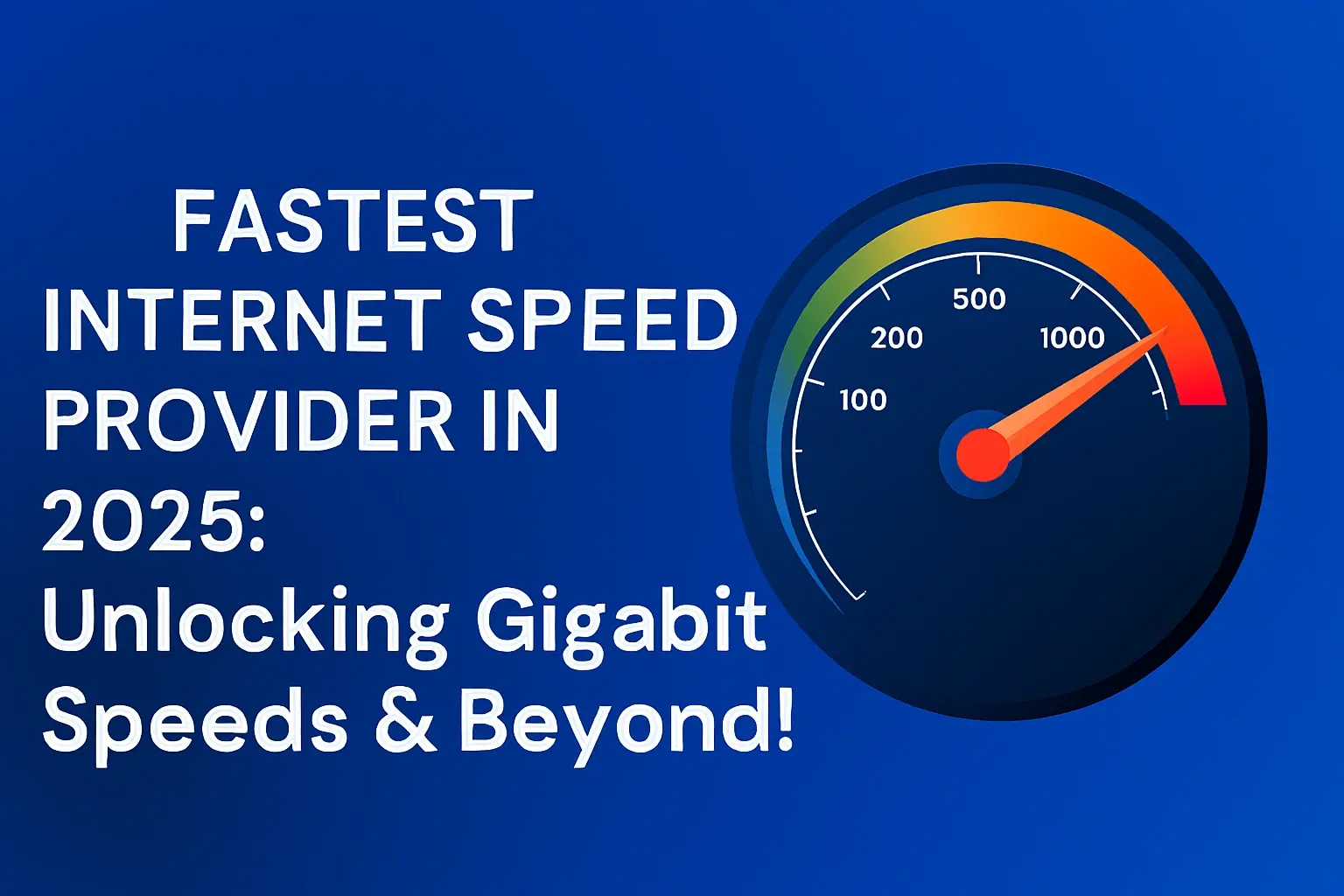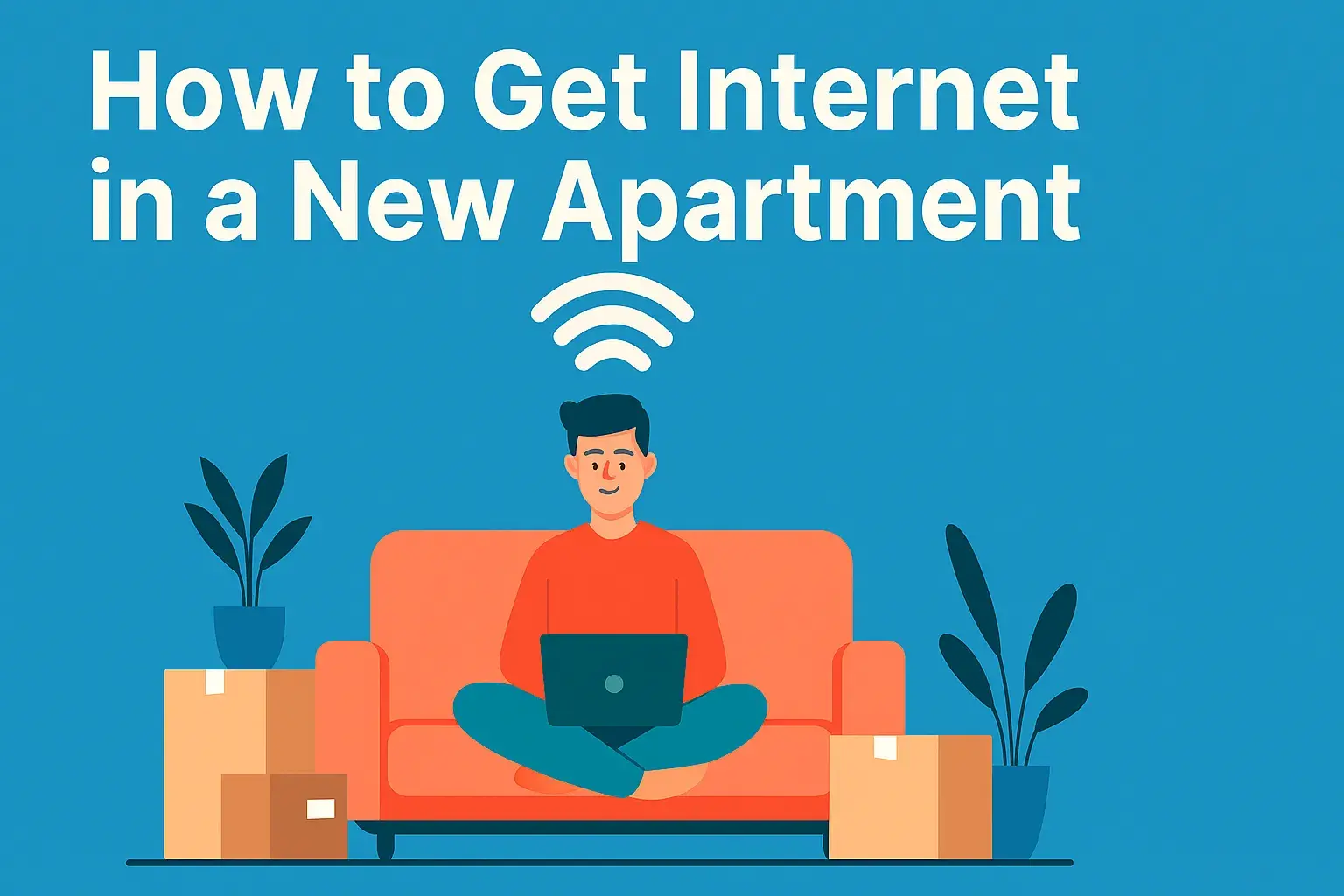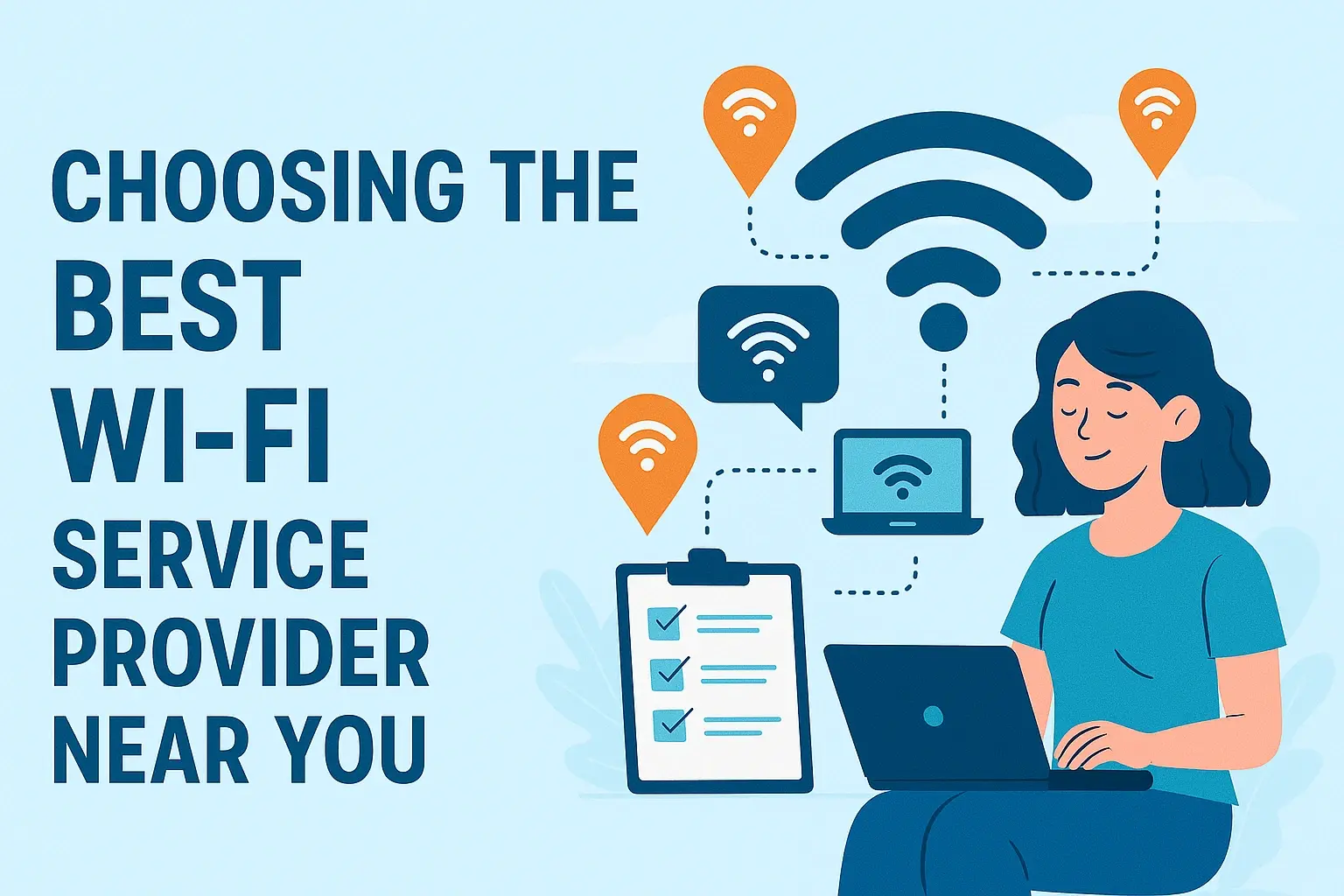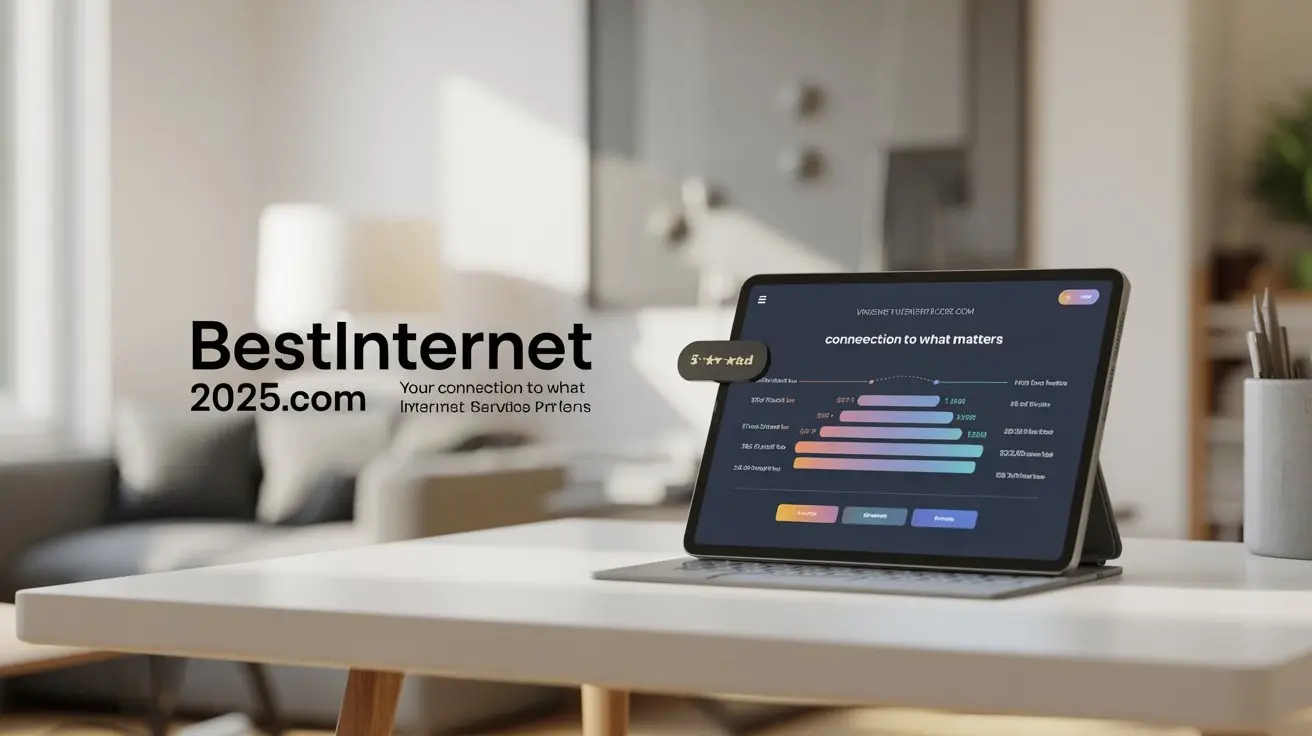Internet Without a Provider: Innovative Connectivity Solutions

Tired of restrictive internet plans and opaque provider contracts? Discover a world of "Internet Without a Provider: Innovative Connectivity Solutions" that offer unprecedented freedom and flexibility. Explore cutting-edge technologies and strategies to bypass traditional ISPs and achieve reliable, high-speed access on your own terms.
Understanding the Traditional Internet Landscape
For decades, accessing the internet has been synonymous with signing up with an Internet Service Provider (ISP). These companies, ranging from multinational corporations to local cable operators, own and maintain the physical infrastructure—the fiber optic cables, copper wires, and coaxial lines—that bring data into our homes and businesses. This model, while historically effective, has created a landscape where a few dominant players dictate terms, pricing, and availability. Users often face limitations such as data caps, speed throttling, expensive equipment rental fees, and geographical monopolies that leave them with few, if any, viable alternatives. The concept of "internet without a provider" directly challenges this established paradigm, seeking to democratize access and empower individuals and communities with more control over their connectivity.
The reliance on ISPs has led to significant issues for many consumers. In rural areas, the cost of deploying infrastructure can be prohibitive, resulting in digital deserts where high-speed internet remains a luxury. Even in urban centers, competition can be scarce, allowing ISPs to maintain high prices and offer subpar service without significant repercussions. Furthermore, the bundled nature of many internet packages often forces consumers to pay for services they don't need. This has fueled a growing desire for alternative solutions that can circumvent these traditional gatekeepers, offering a more direct and potentially cost-effective path to online connectivity. The pursuit of "internet without a provider" is, at its core, a quest for autonomy and a more equitable digital future.
The Rise of Providerless Connectivity
The notion of "internet without a provider" is not about disconnecting from the global network entirely, but rather about decoupling the *access* to that network from a single, traditional ISP. It represents a fundamental shift in how we perceive and obtain internet connectivity. Instead of a one-to-one relationship with a cable or DSL company, users are exploring multifaceted approaches that leverage various technologies and community-driven initiatives. This movement is propelled by a confluence of factors: the increasing ubiquity of wireless technologies, the growing demand for flexible and affordable internet, and a general dissatisfaction with the service and pricing models of incumbent providers. In 2025, the landscape of internet access is more diverse than ever, with innovative solutions emerging to fill the gaps left by traditional ISPs.
This evolution is driven by several key trends. Firstly, the exponential growth of mobile data consumption has pushed cellular networks to expand their capacity and coverage, making them a viable alternative for home and business use. Secondly, advancements in satellite technology have opened up new possibilities for high-speed internet in previously underserved areas. Thirdly, community-based initiatives and the development of private wireless networks are empowering local groups to build their own internet infrastructure, bypassing the need for commercial ISPs altogether. These "providerless" solutions are not just theoretical; they are practical, deployable technologies that are actively reshaping the digital landscape. They offer a compelling alternative for individuals and organizations seeking greater control, cost savings, and improved service quality, directly addressing the core desires behind searching for "internet without a provider."
Why Seek Internet Without a Provider?
The motivations behind seeking internet access without a traditional provider are varied and deeply rooted in consumer frustration and technological advancement. Here are some of the primary drivers:
- Cost Savings: Traditional ISP plans can be expensive, with hidden fees, equipment rental costs, and frequent price increases. Providerless solutions often offer more transparent and potentially lower overall costs.
- Flexibility and Mobility: Many providerless options, especially those leveraging cellular or satellite technology, offer greater flexibility. Users can move their service more easily or tailor plans to their specific usage needs without long-term contracts.
- Access in Underserved Areas: In rural or remote locations where traditional infrastructure is lacking, providerless solutions like satellite and fixed wireless can be the only viable high-speed internet options.
- Performance and Reliability: Some users experience poor service, frequent outages, or inadequate speeds with their current ISP. Alternative solutions might offer better performance or more reliable connections.
- Avoiding Data Caps and Throttling: Many traditional plans impose strict data caps or throttle speeds after a certain usage threshold. Providerless solutions, particularly certain satellite and fixed wireless plans, can offer unlimited or higher data allowances.
- Technological Curiosity and Independence: A segment of users are early adopters who are interested in exploring new technologies and prefer to have more direct control over their internet connection, independent of corporate providers.
Satellite Internet: Beyond the Giants
Satellite internet has long been a lifeline for remote areas, but historically, it was plagued by high latency and slow speeds. The advent of Low Earth Orbit (LEO) satellite constellations has revolutionized this sector, making "internet without a provider" a tangible reality for millions. While Starlink has captured significant public attention, it's crucial to understand that the satellite internet landscape is broader and evolving rapidly. Other players are entering the market, and existing geostationary (GEO) satellite providers are also upgrading their offerings.
LEO satellites orbit much closer to Earth than traditional GEO satellites, dramatically reducing latency. This makes them suitable for a wider range of applications, including real-time gaming, video conferencing, and streaming. For users seeking internet without a provider, LEO satellite internet offers a compelling solution, often requiring a one-time hardware purchase and a monthly service fee, bypassing the need for a local ISP's infrastructure.
How LEO Satellite Internet Works
LEO satellite systems consist of three main components:
- Satellite Constellation: A network of hundreds or thousands of small satellites orbiting Earth at altitudes of 300-1200 miles.
- Ground Stations (Gateways): These facilities connect the satellite constellation to the terrestrial internet backbone.
- User Terminal: A dish antenna installed at the user's location that communicates with the satellites.
Data travels from the user's terminal to a satellite, then to a ground station, and finally to the internet. The return path is similar. The sheer number of satellites ensures that there is always a satellite in view, minimizing downtime and maintaining connectivity.
Key Players and 2025 Outlook
While Starlink (SpaceX) remains the most prominent LEO provider, other significant players are either operational or poised for expansion in 2025:
- OneWeb: Focused on enterprise and government clients, but also expanding residential offerings. Known for its robust network and strong partnerships.
- Amazon Kuiper: Still in development, but expected to launch services in the coming years, potentially offering competitive pricing and performance.
- HughesNet (GEO): While primarily GEO, HughesNet is also investing in LEO technology and offers various plans, including some with higher data allowances than in the past.
- Viasat (GEO): Another established GEO provider that is upgrading its satellite capacity and exploring new service models.
In 2025, we can expect increased competition, leading to potential price reductions and service improvements. Users will have more choices, allowing them to compare speeds, data caps, and pricing more effectively. The availability of satellite internet is also expanding, with many providers now offering service in previously unserved or underserved regions, truly enabling "internet without a provider" for a broader audience.
Considerations for Satellite Internet
- Hardware Costs: The initial investment for the user terminal can be substantial, though often offset by lower monthly fees compared to some traditional plans.
- Installation: Requires a clear, unobstructed view of the sky, which might be challenging in densely wooded areas or urban environments with tall buildings.
- Data Caps: While many LEO services offer unlimited data, some plans might still have fair use policies or deprioritization during peak hours.
- Weather Interference: Heavy rain, snow, or storms can temporarily affect signal strength, though modern systems are designed to mitigate this.
Fixed Wireless Access (FWA) Explained
Fixed Wireless Access (FWA) is a technology that provides wireless high-speed internet to fixed locations, such as homes and businesses, without the need for physical cables. It's a powerful solution for "internet without a provider" because it leverages existing cellular networks or dedicated wireless spectrum to deliver broadband. FWA is particularly effective in areas where laying fiber or cable is cost-prohibitive but where cellular signals are strong.
In 2025, FWA is experiencing significant growth, driven by the rollout of 5G technology. 5G FWA offers speeds comparable to or even exceeding traditional fiber optic connections, making it a highly attractive alternative to cable or DSL providers. Unlike mobile hotspots, FWA uses dedicated equipment installed at the user's premises, ensuring a more stable and robust connection.
How FWA Works
FWA typically involves:
- Base Station: A transmitter located on a tower or building that broadcasts a wireless signal.
- Customer Premises Equipment (CPE): An antenna or receiver installed at the user's home or business that picks up the wireless signal.
- Router: Connects the CPE to the user's internal network (Wi-Fi or Ethernet).
The connection between the base station and the CPE is wireless, but the connection from the base station to the internet backbone is typically wired, using fiber optics. This hybrid approach allows providers to bypass the "last mile" cabling problem, making deployment faster and cheaper.
Types of FWA
FWA can be categorized based on the spectrum used:
- Licensed Spectrum FWA: Utilizes spectrum bands licensed to specific providers (e.g., cellular carriers like Verizon, T-Mobile, AT&T). This often provides more reliable performance due to less interference.
- Unlicensed Spectrum FWA: Uses spectrum bands that are available for public use (e.g., 2.4 GHz and 5 GHz Wi-Fi frequencies). This can be more susceptible to interference but is often cheaper to deploy.
- Citizens Broadband Radio Service (CBRS) FWA: A mid-band spectrum in the US that offers a good balance of speed, range, and capacity, often used by smaller providers or for private networks.
FWA Providers and 2025 Trends
Major cellular carriers are heavily investing in FWA as a way to compete with traditional ISPs and offer "internet without a provider" services:
- Verizon 5G Home Internet: Offers high speeds in select areas, leveraging their 5G Ultra Wideband network.
- T-Mobile Home Internet: One of the largest FWA providers, utilizing its extensive 5G network to reach a wide customer base.
- AT&T Internet Air: Another major player offering FWA solutions, particularly in areas where fiber deployment is limited.
Beyond the major carriers, numerous smaller Wireless Internet Service Providers (WISPs) specialize in FWA, often serving rural or suburban communities. In 2025, expect FWA to become even more prevalent, with providers focusing on expanding coverage, increasing speeds, and offering more competitive pricing. Many FWA plans in 2025 are also offering unlimited data, making them a strong contender for those looking to escape ISP data caps.
Advantages of FWA
- Faster Deployment: Significantly quicker to deploy than laying physical cables.
- Cost-Effective: Can be cheaper to deploy, potentially leading to lower prices for consumers.
- High Speeds: 5G FWA can deliver gigabit speeds.
- No Data Caps (Often): Many FWA plans in 2025 come with unlimited data.
Disadvantages of FWA
- Line-of-Sight Requirements: Performance can be affected by obstructions like trees and buildings.
- Range Limitations: Signal strength can degrade over longer distances.
- Interference: Unlicensed spectrum FWA can be prone to interference.
- Availability: Still dependent on the availability of strong wireless signals in a specific location.
Mesh Networks and Community Internet
Mesh networking represents a decentralized approach to internet connectivity, empowering communities to build their own networks and share resources. This is a prime example of "internet without a provider" in its purest form, where the infrastructure is owned and managed by the users themselves. A mesh network is a type of network topology where each node (or device) relays data for the network. This creates a robust and resilient system where there is no single point of failure.
In 2025, community-driven mesh networks are gaining traction as a viable alternative, especially in areas with poor ISP service or high costs. These networks can be built using readily available hardware, such as Wi-Fi routers and specialized mesh networking devices. The concept is simple: each participating household or business contributes to the network by providing a connection point, and in return, all participants share the collective bandwidth and access.
How Mesh Networks Function
In a wireless mesh network:
- Gateway Node: At least one node in the mesh must have a connection to the wider internet (e.g., via a traditional ISP, satellite, or FWA). This node acts as the gateway.
- Relay Nodes: All other nodes in the mesh act as relays, forwarding data packets from one node to another until they reach their destination or the gateway.
- Self-Healing: If one node fails, the network can automatically reroute traffic through other available nodes, ensuring continued connectivity.
The more nodes in a mesh network, the more resilient and capable it becomes. Data can take multiple paths to reach its destination, increasing reliability and potentially improving speeds by distributing the load.
Types of Mesh Networks
- Community Wi-Fi Mesh: These are the most common type, where individuals in a neighborhood or apartment building connect their routers to form a shared network.
- Wireless Internet Service Provider (WISP) Mesh: Some WISPs use mesh technology to extend their network coverage across larger areas, connecting multiple access points wirelessly.
- Private Mesh Networks: Used by organizations or campuses for internal communication and data sharing.
Building and Joining a Mesh Network in 2025
For individuals looking to create or join a mesh network:
- Research Local Initiatives: Many cities and towns have existing community mesh network projects. Websites like Meshpoint.org (example, not real) can be a starting point.
- Hardware Requirements: Often requires compatible routers that support mesh protocols (e.g., OpenWrt, DD-WRT firmware). Specialized mesh nodes are also available.
- Contribution: Participants typically contribute a portion of their existing internet bandwidth or provide a physical location for a node.
- Governance: Community mesh networks often have a governance structure to manage rules, bandwidth allocation, and technical support.
In 2025, the ease of setting up and managing mesh networks is improving with more user-friendly software and hardware. The focus is on creating affordable, resilient, and community-controlled internet access, offering a true "internet without a provider" experience for participants.
Benefits of Mesh Networks
- Cost-Effective: Significantly reduces or eliminates individual ISP bills.
- Resilience: Highly resistant to outages due to its decentralized nature.
- Community Empowerment: Fosters local collaboration and digital inclusion.
- Privacy: Can offer enhanced privacy compared to ISP-provided services.
Challenges of Mesh Networks
- Dependence on Gateway: The entire network relies on the gateway node having a stable internet connection.
- Performance Variability: Speeds can vary depending on the number of hops and the quality of connections between nodes.
- Technical Expertise: Setting up and maintaining mesh networks can require some technical knowledge.
- Scalability: Large-scale mesh networks can become complex to manage.
Leveraging Cellular Data as a Primary Connection
For many, the idea of "internet without a provider" immediately brings to mind using their smartphone's data plan. In 2025, with the widespread availability of 5G and increasingly generous data allowances from mobile carriers, cellular data is no longer just a backup; it's a primary internet solution for many households and individuals.
This approach involves using a smartphone, a dedicated cellular hotspot device, or a cellular modem/router to access the internet. The key is to find a mobile plan that offers sufficient data and speeds to meet your needs without incurring exorbitant costs or hitting restrictive data caps. The convergence of mobile and fixed broadband is blurring the lines, making cellular a legitimate contender for home internet.
Methods for Using Cellular Data
There are several ways to utilize cellular data as your primary internet connection:
- Smartphone Hotspot: Most modern smartphones can create a Wi-Fi hotspot, allowing other devices (laptops, tablets, smart TVs) to connect to the internet via the phone's cellular data. This is the most accessible method but can drain phone battery quickly and may have data limits imposed by the carrier.
- Dedicated Mobile Hotspot Device (MiFi): These are portable devices specifically designed to create a Wi-Fi network using a cellular connection. They often offer better battery life and can connect more devices than a smartphone hotspot.
- Cellular Modem/Router: These devices are designed for more permanent installations in a home or office. They connect directly to a cellular network and provide a Wi-Fi signal throughout the premises, similar to a traditional home router. These are ideal for users seeking a robust, "internet without a provider" solution.
Choosing the Right Cellular Plan in 2025
The success of using cellular data as a primary connection hinges on selecting the right plan. Key factors to consider include:
- Data Allowance: Look for plans with truly unlimited data or very high data caps. Be wary of "unlimited" plans that throttle speeds after a certain threshold. In 2025, many carriers offer unlimited 5G data for home internet replacement devices.
- Speed: 5G networks offer significantly faster speeds than 4G LTE, making them suitable for streaming, gaming, and video conferencing. Check coverage maps for 5G availability in your area.
- Deprioritization: Understand if and when your data might be deprioritized (slowed down) during times of network congestion. This is common on many "unlimited" plans.
- Device Compatibility: Ensure the plan and device you choose are compatible. Some carriers restrict hotspot usage or require specific hardware for their home internet replacement plans.
- Cost: Compare the total monthly cost, including any device financing or activation fees.
Leading Cellular Providers for Home Internet (2025)
Major carriers are actively marketing their cellular services as home internet alternatives:
- T-Mobile Home Internet: Often cited as a leading option, offering unlimited 5G data at a fixed price, with no data caps or throttling.
- Verizon 5G Home Internet: Provides high-speed 5G internet, with different speed tiers available depending on location.
- AT&T Internet Air: Leverages AT&T's 5G network to offer a wireless home internet solution.
These services are often presented as "internet without a provider" because they bypass the need for a traditional ISP's cable or fiber infrastructure, using the carrier's existing cellular network instead. For many, this offers a simpler, more flexible, and often more affordable way to get online.
Potential Drawbacks
- Network Congestion: In densely populated areas, speeds can fluctuate significantly, especially during peak hours.
- Data Deprioritization: Many unlimited plans will slow down your speeds after a certain amount of usage, impacting performance.
- Coverage Gaps: While 5G is expanding, coverage is not yet universal, and signal strength can vary greatly by location.
- Device Limitations: Smartphone hotspots have limited battery life and may not be ideal for heavy, continuous usage.
Emerging Technologies and the Future of Providerless Internet
The quest for "internet without a provider" is a dynamic field, constantly being reshaped by technological innovation. As we look towards the future, several emerging technologies promise to further democratize internet access and offer even more robust alternatives to traditional ISPs.
The focus is on increasing speed, reducing latency, enhancing reliability, and lowering costs. These advancements are not just about incremental improvements; they represent potential paradigm shifts in how we connect to the global network. In 2025 and beyond, these technologies will play a crucial role in expanding digital inclusion and providing greater choice to consumers.
Key Emerging Technologies
- 6G Networks: While 5G is still being fully rolled out, research and development into 6G are well underway. 6G is expected to offer terabit-per-second speeds, near-zero latency, and the ability to integrate sensing and AI capabilities directly into the network. This could enable entirely new forms of connectivity, potentially making wireless connections even more powerful than wired ones.
- Li-Fi (Light Fidelity): This technology uses visible light, infrared, and ultraviolet spectrum for wireless communication. Li-Fi offers the potential for extremely high speeds and enhanced security, as light signals cannot penetrate walls. While still largely in its nascent stages for widespread consumer use, it could offer localized high-speed internet solutions in specific environments.
- Advanced Satellite Constellations: Beyond LEO, future satellite internet solutions might involve larger, more sophisticated constellations, potentially integrated with terrestrial networks. Concepts like software-defined satellites and on-orbit processing could lead to more adaptable and efficient satellite services.
- AI-Powered Network Management: Artificial intelligence will play an increasingly vital role in optimizing and managing decentralized networks. AI can predict congestion, dynamically route traffic, and self-heal networks, making providerless solutions more stable and efficient.
- Edge Computing Integration: As computing power moves closer to the end-user (edge computing), the demand for low-latency, high-bandwidth connectivity will increase. This will drive innovation in wireless technologies and mesh networking to support these distributed applications.
- Quantum Internet: While a longer-term prospect, the development of a quantum internet could revolutionize secure communication and distributed quantum computing. This would represent a completely new paradigm of connectivity, far beyond the current understanding of internet access.
The Role of Open Standards and Interoperability
A significant trend in the future of "internet without a provider" will be the emphasis on open standards and interoperability. As more diverse technologies and networks emerge, the ability for them to seamlessly communicate and integrate will be crucial. This will allow for more flexible and adaptable connectivity solutions, where users can mix and match different technologies to create their ideal internet setup.
In 2025, we are seeing increased collaboration between hardware manufacturers, software developers, and community organizations to foster these open ecosystems. This collaborative approach is essential for building a future where internet access is not controlled by a few large corporations but is a shared, community-driven resource.
Key Considerations and Challenges
While the prospect of "internet without a provider" is exciting, it's important to approach these solutions with a clear understanding of the potential challenges and considerations. Not every solution will be a perfect fit for every user, and some require a more proactive approach than simply signing up for a service.
Successfully navigating the world of providerless internet requires careful planning, research, and sometimes, a willingness to experiment. By understanding the nuances of each technology and potential hurdles, users can make informed decisions and achieve reliable, cost-effective internet access.
Technical Expertise and Installation
Many providerless solutions, especially mesh networks and some FWA setups, may require a higher degree of technical understanding for installation and maintenance compared to plug-and-play ISP modems. Users might need to configure routers, align antennas, or troubleshoot wireless interference. While many providers are simplifying the process, some DIY effort or community support may be necessary.
Reliability and Uptime
The reliability of providerless solutions can vary significantly. Satellite internet can be affected by weather, FWA by obstructions and interference, and cellular by network congestion. While these technologies are improving, they may not always match the consistent uptime that some users are accustomed to with wired connections. Redundancy, such as having a backup connection (e.g., cellular as a backup to satellite), can be a valuable strategy.
Speed and Performance Consistency
Speeds can fluctuate with many providerless options. Cellular and FWA speeds are dependent on signal strength and network load. Satellite internet, while improving, can still experience latency that affects certain real-time applications. It's crucial to research expected speeds in your specific location and understand how performance might vary.
Data Caps and Fair Use Policies
While many providerless solutions aim to offer unlimited data, it's essential to read the fine print. Some plans may still have data caps, throttling after a certain usage, or fair use policies that can impact performance during peak times. Understanding these limitations is key to avoiding unexpected charges or performance degradation.
Geographical Availability
This is perhaps the most significant challenge. While providerless solutions aim to overcome geographical limitations, their availability is still dictated by factors like satellite coverage, cellular tower proximity, and line-of-sight for FWA. What works in one area might not be an option in another.
Cost of Hardware
Many providerless solutions require an upfront investment in hardware. Satellite dishes, FWA antennas, and cellular modems can cost several hundred dollars. While this is often a one-time cost that can be recouped over time through lower monthly fees, it can be a barrier for some users.
Regulatory and Legal Aspects
In some cases, setting up community mesh networks or private wireless networks might involve navigating local regulations regarding spectrum usage or infrastructure deployment. While less common for individual users, it's a consideration for larger community initiatives.
Comparison Table: Providerless Solutions at a Glance
Here's a simplified comparison to help illustrate the trade-offs:
| Solution | Best For | Pros | Cons | Typical Hardware Cost (2025 Est.) |
|---|---|---|---|---|
| LEO Satellite Internet | Remote/Rural Areas, Offices without terrestrial options | Wide availability, High speeds (improving), No data caps (often) | Initial hardware cost, Potential weather interference, Latency still a factor for some apps | $400 - $600 |
| Fixed Wireless Access (FWA) | Suburban/Urban fringe, Areas with strong cellular signals | High speeds (5G), Lower latency than satellite, Often unlimited data, Faster deployment | Requires line-of-sight, Availability limited by tower proximity, Potential interference | $100 - $300 |
| Cellular Data (Hotspot/Modem) | Mobile users, Small households, Temporary needs, Areas with excellent 5G coverage | High mobility, Easy setup, Potentially competitive pricing | Data caps/throttling, Network congestion, Device battery drain (hotspot) | $50 - $300 (for dedicated devices) |
| Mesh Networks | Dense communities, Cost-conscious users, Tech enthusiasts | Extremely low cost (shared), High resilience, Community control | Requires technical setup, Dependent on gateway connection, Performance varies | $50 - $200 (per node, if building from scratch) |
Choosing the Right Solution for You
Selecting the best "internet without a provider" option requires a personalized approach. It's not a one-size-fits-all scenario. By carefully evaluating your specific needs, location, and technical comfort level, you can identify the most suitable solution.
The key is to move beyond the traditional ISP model and embrace the flexibility and innovation that the modern connectivity landscape offers. Whether you're in a remote rural area or a densely populated city, there's likely a providerless solution that can meet your internet demands.
Step-by-Step Decision Guide
Follow these steps to determine the best providerless internet solution:
- Assess Your Location:
- Rural/Remote: Satellite internet is often the primary option. Check coverage maps for LEO providers like Starlink and established GEO providers.
- Suburban/Urban Fringe: Fixed Wireless Access (FWA) from major carriers or local WISPs is a strong contender. Also, check cellular coverage for 5G home internet replacements.
- Urban/Densely Populated: Cellular data (5G home internet) might be the most accessible. Explore community mesh networks if available.
- Determine Your Usage Needs:
- Light Use (Browsing, Email): Most solutions will suffice. Focus on cost and availability.
- Moderate Use (Streaming, Social Media): Requires decent speeds and reliable connections. FWA, cellular, and LEO satellite are good options.
- Heavy Use (Gaming, Video Conferencing, Multiple Users): Prioritize low latency and high, consistent speeds. 5G FWA and potentially next-gen LEO satellite will be best.
- Evaluate Your Budget:
- Upfront Costs: Satellite and some FWA require significant hardware investment. Cellular might offer device financing. Mesh networks can be very low cost if building with existing hardware.
- Monthly Costs: Compare service fees, data plans, and potential overage charges. Providerless solutions often aim for fixed, transparent pricing.
- Consider Technical Comfort Level:
- Beginner: Cellular data via a smartphone hotspot or a carrier-provided 5G home internet device is the easiest.
- Intermediate: FWA installation might involve mounting an antenna.
- Advanced: Setting up and managing mesh networks or custom FWA equipment requires more technical skill.
- Research Specific Providers:
- Check coverage maps for LEO satellite, FWA, and cellular providers in your exact address.
- Read reviews from users in your area to gauge real-world performance and reliability.
- Look for providers offering free trials or satisfaction guarantees.
- Plan for Redundancy (Optional but Recommended):
- If reliability is paramount, consider having a secondary connection. For example, a cellular hotspot as a backup to satellite or FWA.
By following this guide, you can confidently explore the world of "internet without a provider" and find a connectivity solution that empowers you with greater choice, flexibility, and potentially significant cost savings. The future of internet access is diverse, and these innovative solutions are leading the way.
Conclusion
The landscape of internet access is undergoing a profound transformation, moving away from the traditional ISP monopoly towards a more diverse and user-centric ecosystem. The concept of "internet without a provider" is no longer a fringe idea but a tangible reality, driven by rapid technological advancements and a growing demand for greater control and affordability. From the expansive reach of satellite internet to the high-speed potential of Fixed Wireless Access (FWA), and the community-driven resilience of mesh networks, innovative solutions are emerging to meet the connectivity needs of individuals and businesses alike.
In 2025, users have more options than ever to bypass the limitations of legacy providers. LEO satellite constellations are bringing high-speed internet to remote corners of the globe, while 5G FWA offers a compelling alternative to cable in suburban and urban areas. Cellular data, powered by advanced 5G networks, is proving itself as a viable primary internet connection for many households. Furthermore, the rise of community mesh networks empowers local groups to build their own infrastructure, fostering digital inclusion and independence. While challenges related to installation, reliability, and upfront costs exist, the benefits of flexibility, potential cost savings, and access in underserved areas are significant.
To truly embrace "internet without a provider," it's essential to conduct thorough research, understand your specific needs and location, and compare the offerings of various providers. By doing so, you can unlock a world of connectivity that is more tailored, more flexible, and more empowering than ever before. The future of the internet is decentralized, and these innovative solutions are paving the way for a more equitable and accessible digital future for all.
